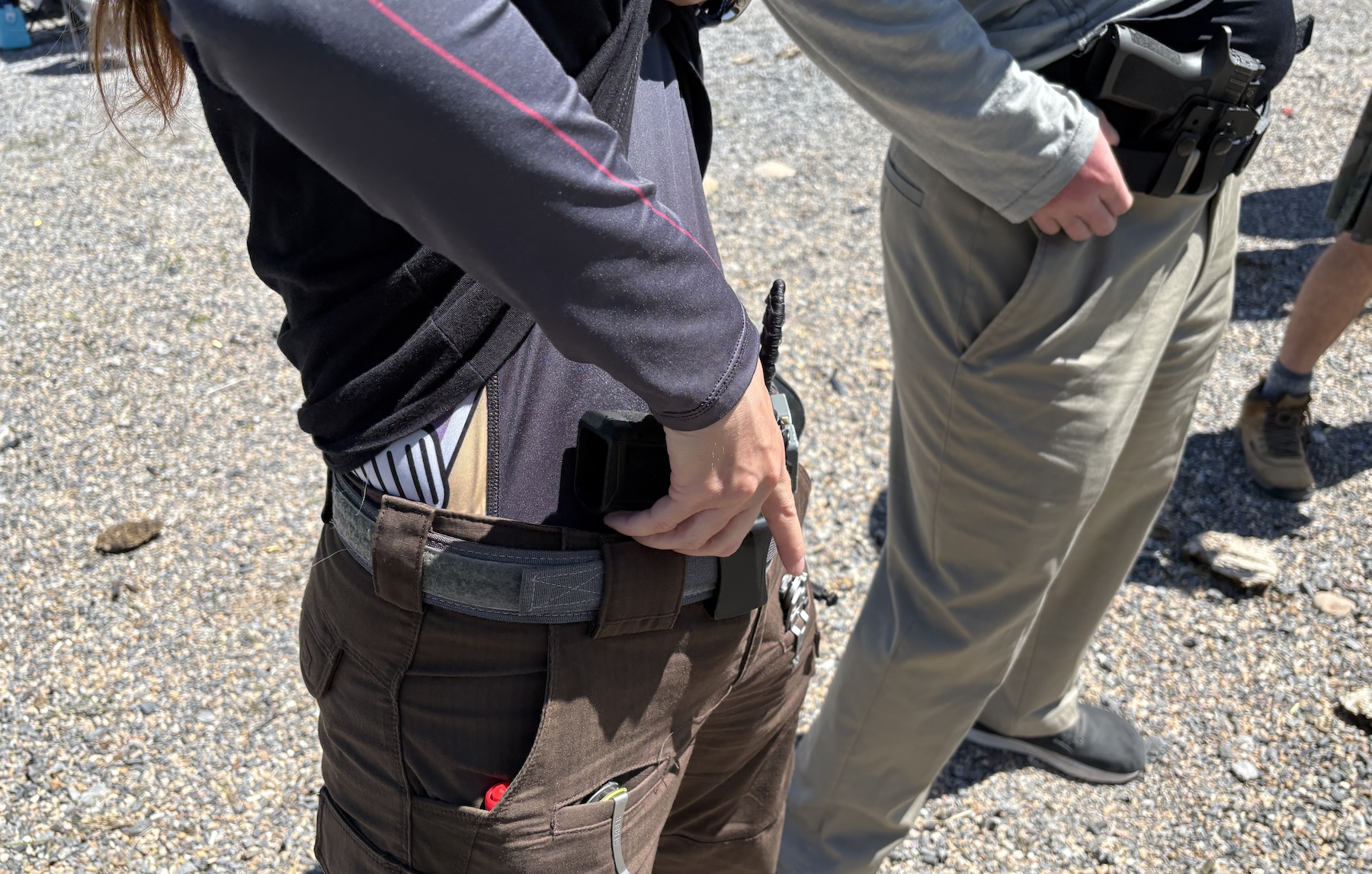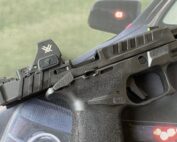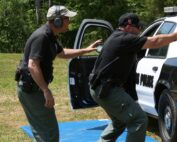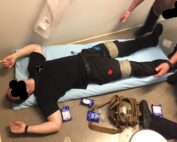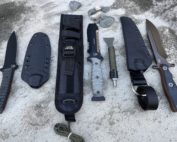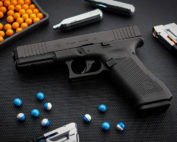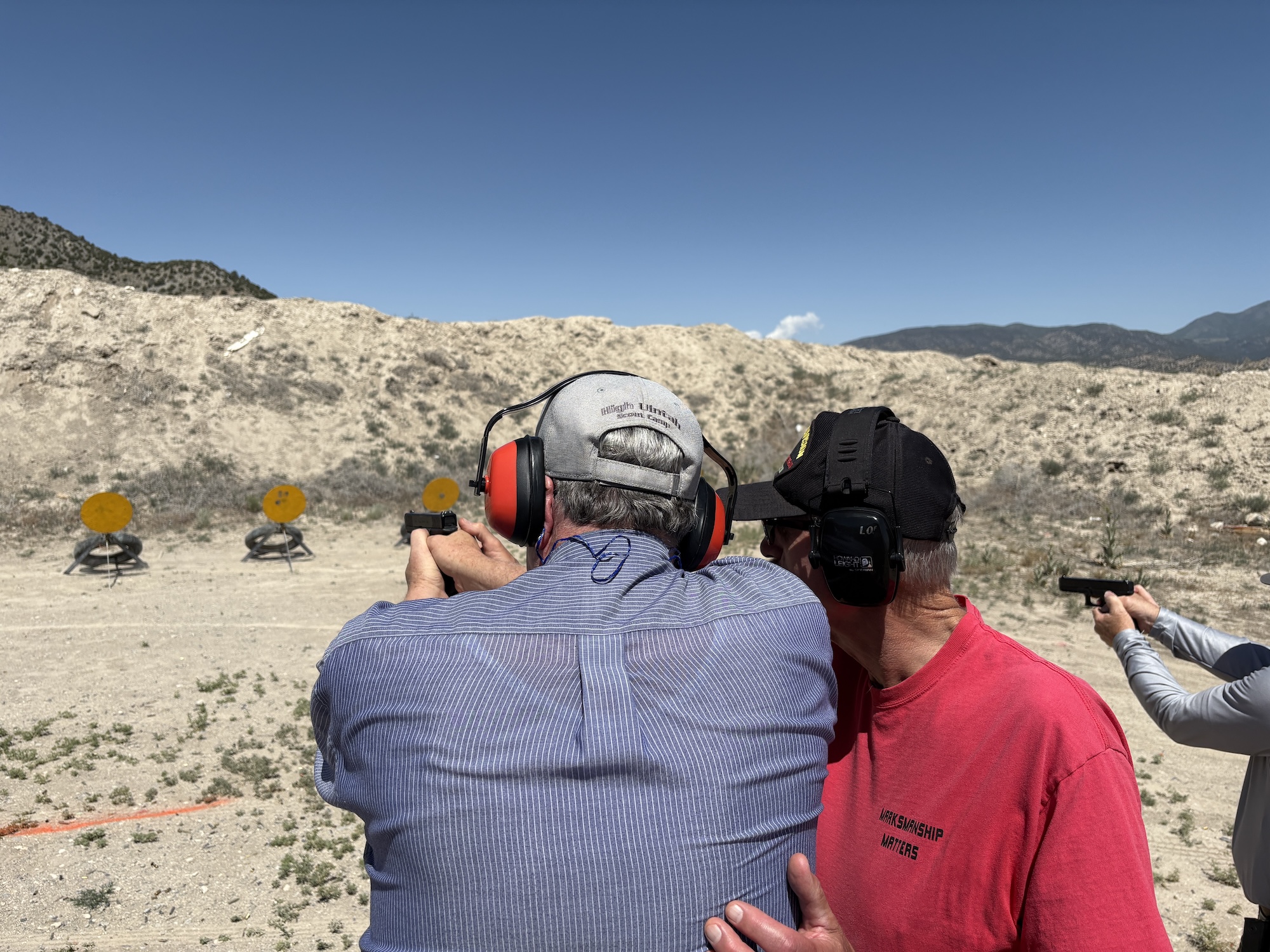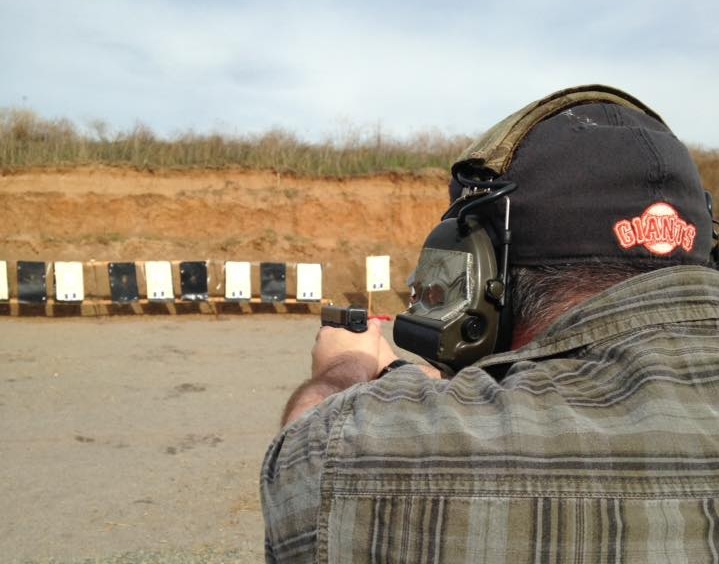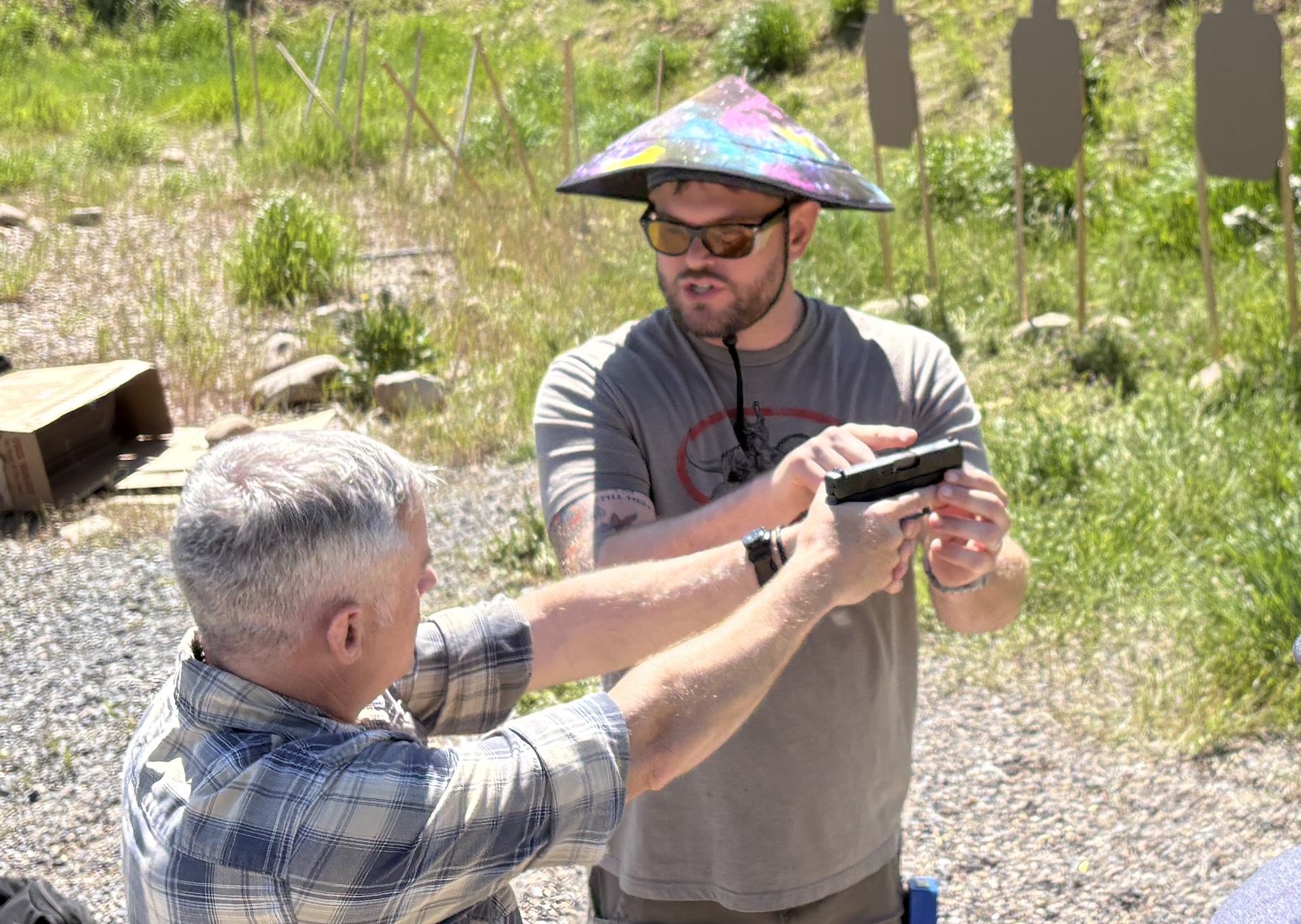
feature_3807
Clark working trigger control drills in dry practice with a student - which is why neither ear nor eye protection is being worn.
performance /pər-fôr′məns/
noun
- The act of performing or the state of being performed.
- The way in which someone or something functions.
“The pilot rated the airplane’s performance in high winds.”
That’s the first word, and shooting, defined as the act of one who shoots, is the second.
“Performance shooting” is a phrase frequently repeated in firearms training. It generally tilts towards the competition side with a bias towards USPSA-style shooting. It is perceived as going faster with a larger area for acceptable hits. This is neither good nor bad; it just is.
Recently, I had the chance to attend a beta test of a performance shooting class. It was taught by Alex Clark, who teaches under the Citizen Defense Research banner. He was assisted by Melody Lauer, who has been with CDR since its inception.

Alex is demonstrating strong-hand only shooting. For his classes, he prefers the non-shooting hand to be placed on the shooter’s head.
Saturday AM
As is the norm with competently presented firearms training these days, we began with a discussion. Introductions and the “why” for the class were followed by a thoughtful safety brief. I appreciated it because Clark gave a deeper-than-normal dive behind each of the four rules. Too often, instructors burn through the words instead of addressing the “what” involved in each of them. Some of these included having just one way to handle firearms, rather than one for loaded guns and another for “unloaded” ones. Be mindful of the muzzle’s path back to the holster. And keeping one’s trigger finger where the frame and slide meet (verbiage very close to mine).
Following that, they addressed two issues that would immediately result in dismissal from that day’s training: muzzling anyone else in the class and unauthorized gun handling. Whatever the reason, there would be no excuse for either of these. Then, each student had to say these out loud. No misunderstanding there.
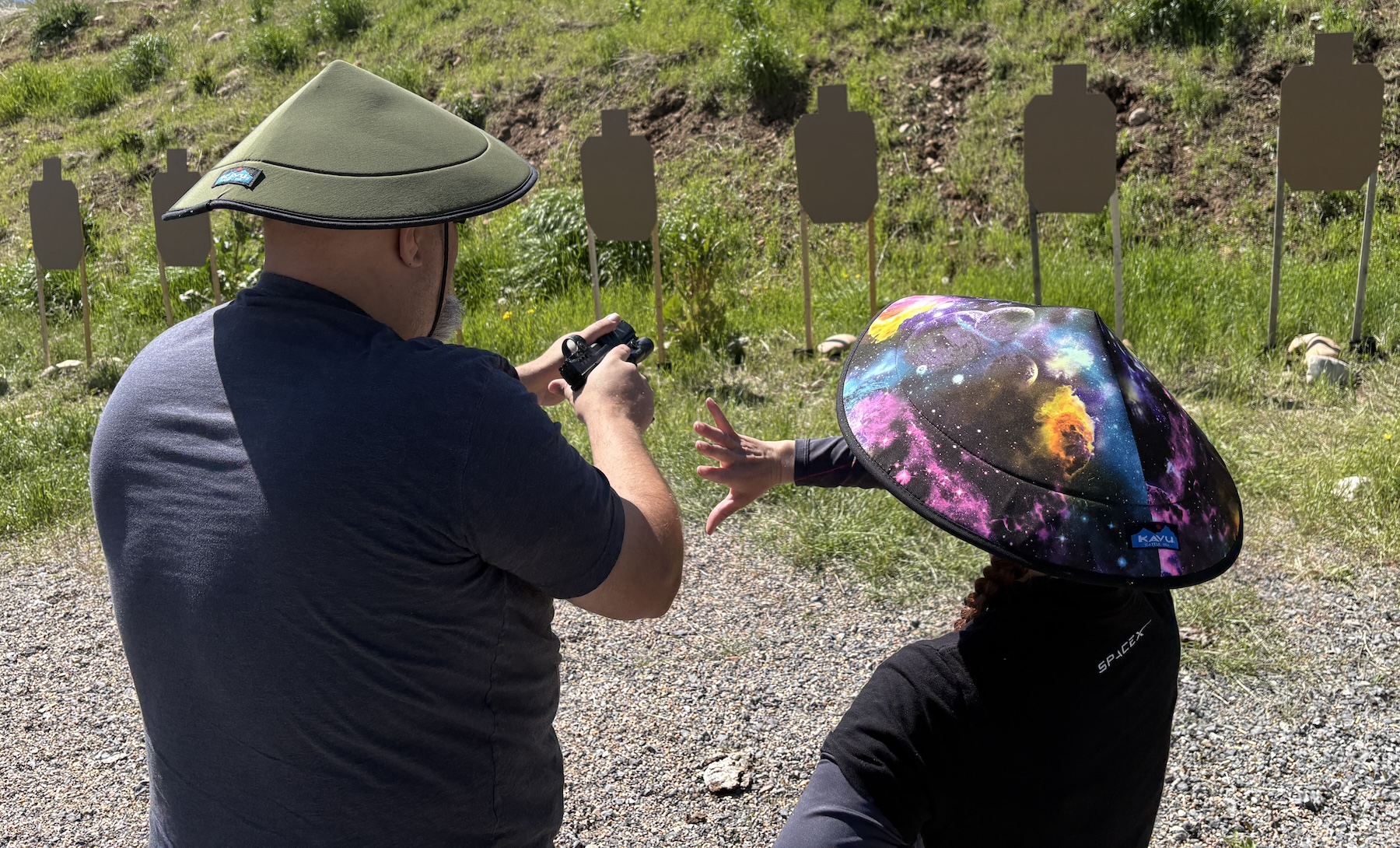
There was a significant amount of one-on-one coaching, accompanied by specific, individualized feedback.
Dry Practice
Once on the firing line, pistols were unloaded, and dry fire began. We spent several minutes on it, including the draw from concealment. Alex covered methods for both open-bottom (t-shirts) and open-front (vest, button-down shirts) styles, which were demonstrated.
First Shots
The first drill was the International Defensive Pistol Association 5×5 classifier shot on their target at 10 yards. The highest value scoring areas are circles, 3″ and 8″, instead of the USPSA target’s rectangles. While it can frustrate me on occasion, it tests everything but support hand shooting.
We moved on to shooting at circles on the head (4″) and body (8″) with a focus (pun intended) on accuracy first and the feedback from the sights second.
Throughout the two days, Alex emphasized working through shooting problems by checking your grip, sights, and trigger manipulation.
Bill Drills
Numerous Bill Drills were shot during class. For those not familiar, that is six (6) shots to the down zero or A zone as quickly as possible from the holster. Two seconds is grandmaster time; anything under 3.0 is spicy, in their words. We shot these with both hands (freestyle) on the pistol, as well as strong- and weak-hand-only work.
A familiar pattern developed – practice the drill freestyle, using both strong and weak hands, before shooting it for a score. Alex demonstrated every drill after explaining it. Whether he knew it or not, he was using the EDIP teaching model – Explain, Demonstrate, Imitate, and Practice.
The Draws
Since we worked from concealment throughout the class, we had countless reps with our draws. For drawing from under a t-shirt, we were shown hooking with the support hand fingers and then raising above to the sternum while the shooting hand moved to the grip. To prevent your shirt from fouling the draw, Alex told us to get the gun hand above the support hand.
A strong hand-only draw involves hooking the hem of the shirt, pulling it up above the pistol, and trapping it against the body while getting the grip.
All weak-hand work was done with a pistol already transitioned to that hand. While the draw was discussed, we did not work weak-hand only draws.
Sunday
On day 2, we moved into Bull’s Eye work along with Garcia dots. Again, freestyle, SHO, and WHO. Everything was evaluated and discussed, with an emphasis on both accuracy and speed. Alex and Melody wanted what you had seen or felt behind those shots with unacceptable hits.
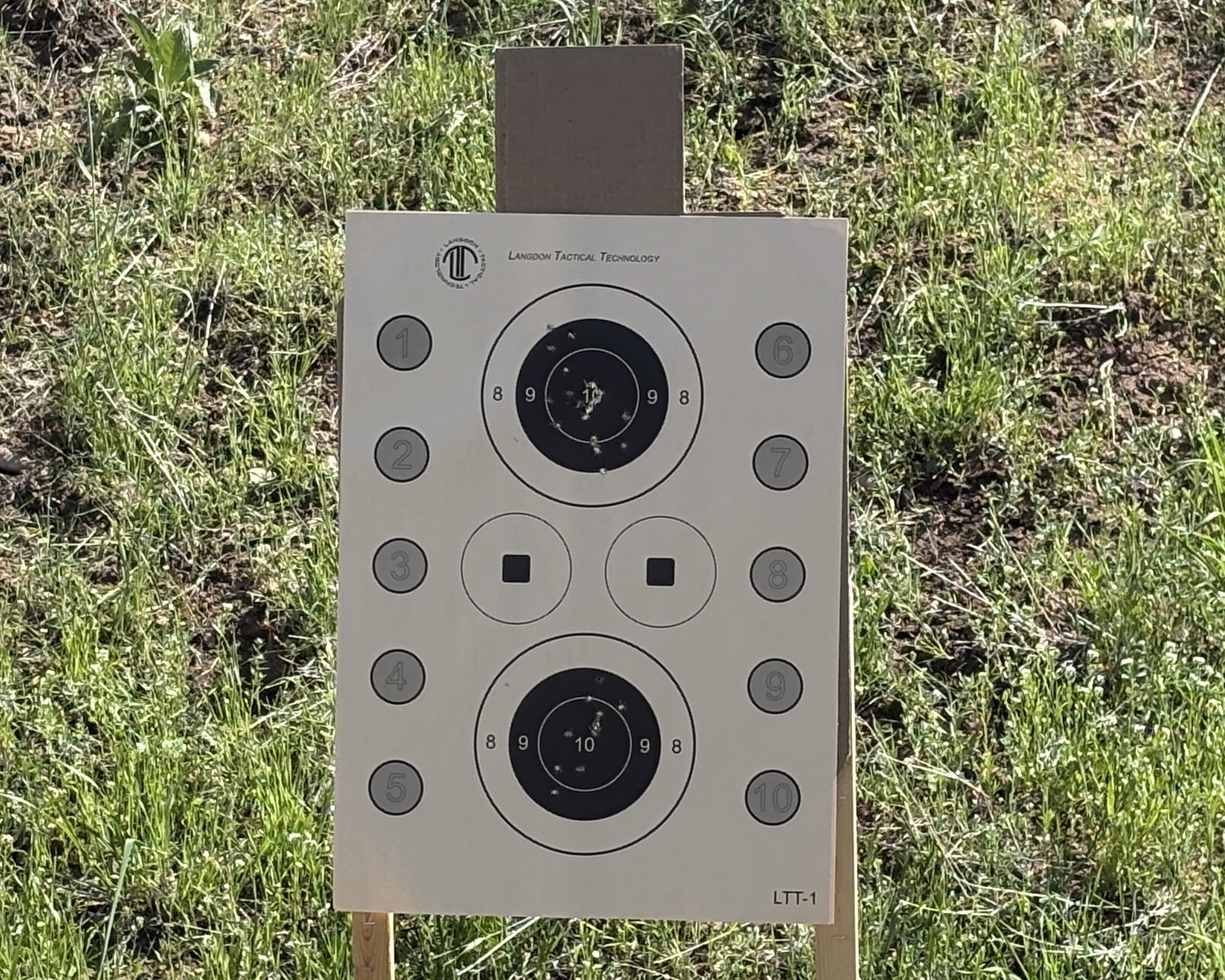
Results from the HITS Advanced Super Test and 10 rounds at each distance – 15 yards & 15 seconds; 10 yards & 10 seconds; 5 yards & 5 seconds.
We shot Hackathorn’s The Test before taking a couple of runs at the HITS Advanced Super Test. Both require speed and accuracy, with penalties for missed shots and time penalties.
After re-visiting the IDPA classifier, the shooting with Clark’s “Three Bills” drill at seven yards. A traditional six-shot run freestyle and again SHO before finishing with a Bill (Rodger’s) Drill weak-handed – six to the chest circle and then a headshot.
Alex and Melody both frequently credited Ben Stoeger, as well as Paul Gomez and Todd L. Green, both of whom left us too soon, for significantly influencing their shooting and teaching.
We shot right about 500 rounds over the weekend. There were no mag dumps; each round counted, which is the way it should be.
Gear
In terms of equipment, I used Otte NoizeBarrier in-ear hearing protection, prescription Oakleys, a Smith & Wesson M&P 2.0 Compact with an Aimpoint Acro P2 and Streamlight’s TLR-& HL-X light, a JM Custom Kydex appendix holster, Wilderness belt, and magazine pouches from Raven Concealment.
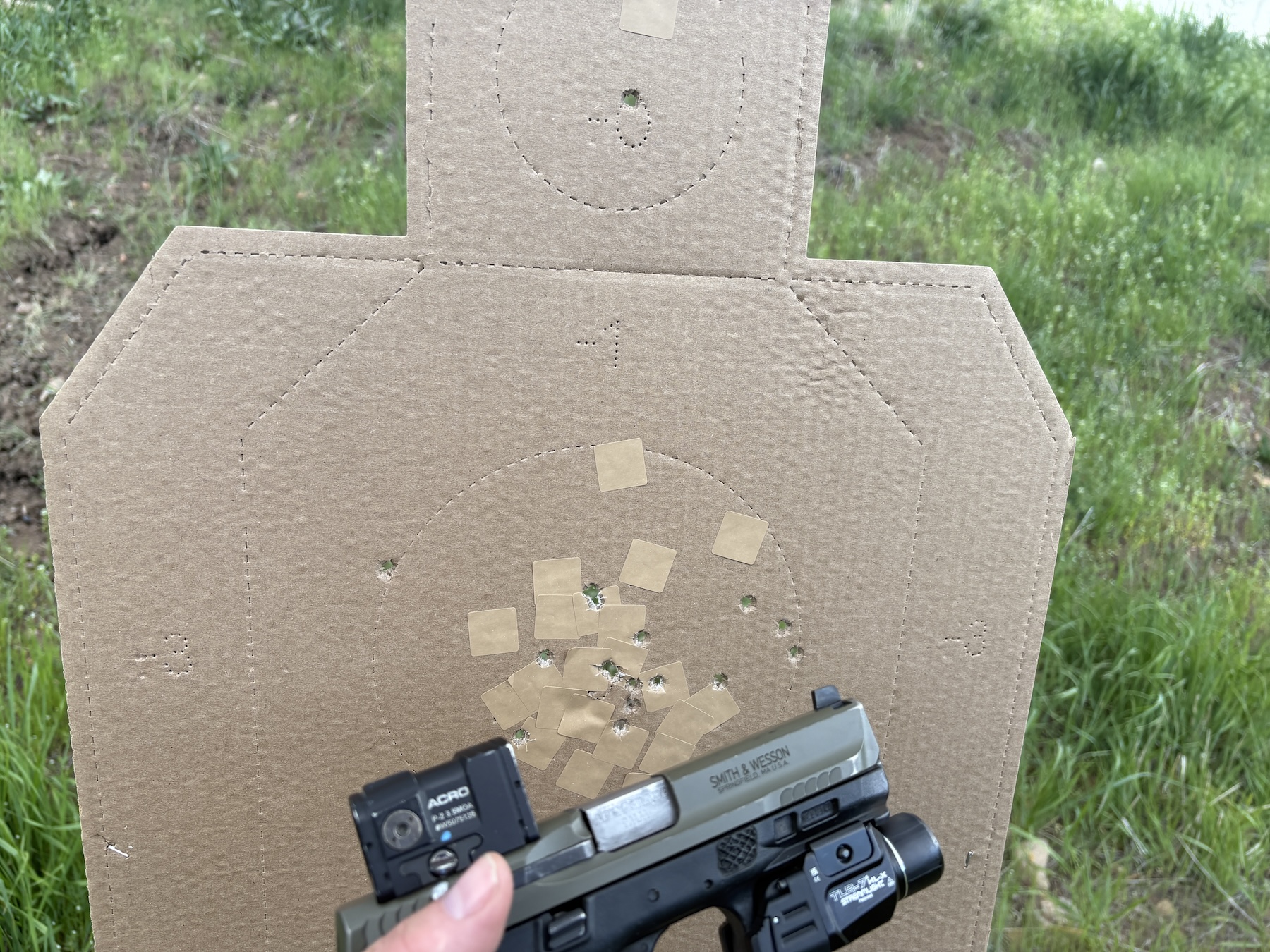
After one run of the Three Bills drill, with my M&P 2.0 Compact, Aimpoint Acro P2, and Streamlight TLR-7 HL-X.
Intellectual Flexibility
Alex emphasized the importance of having more than one way to communicate a principle or topic, which I appreciated. While Alex comes from a competitive background, the class focused on performance shooting itself. The material was agnostic, neither focused on competition nor tactical application, but rather on shooting more accurately in less time.
Take Aways
Performance shooting sets up officers to end violent encounters sooner with potentially fewer rounds.
I need to be more willing to let the wheels come off when I practice and, to a degree, when I compete. Being a 1/10th of a second sooner on some things would yield significant gains. The class also demonstrated how to structure your practice. Go, take this class; push your shooting to failure, and then dial it back.
CONTACT:
(Note: I paid full price for the class)
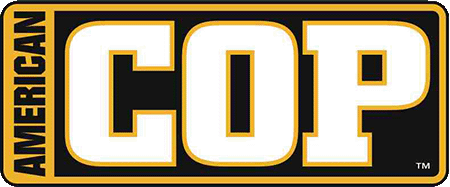

 (+6 rating, 6 votes)
(+6 rating, 6 votes)